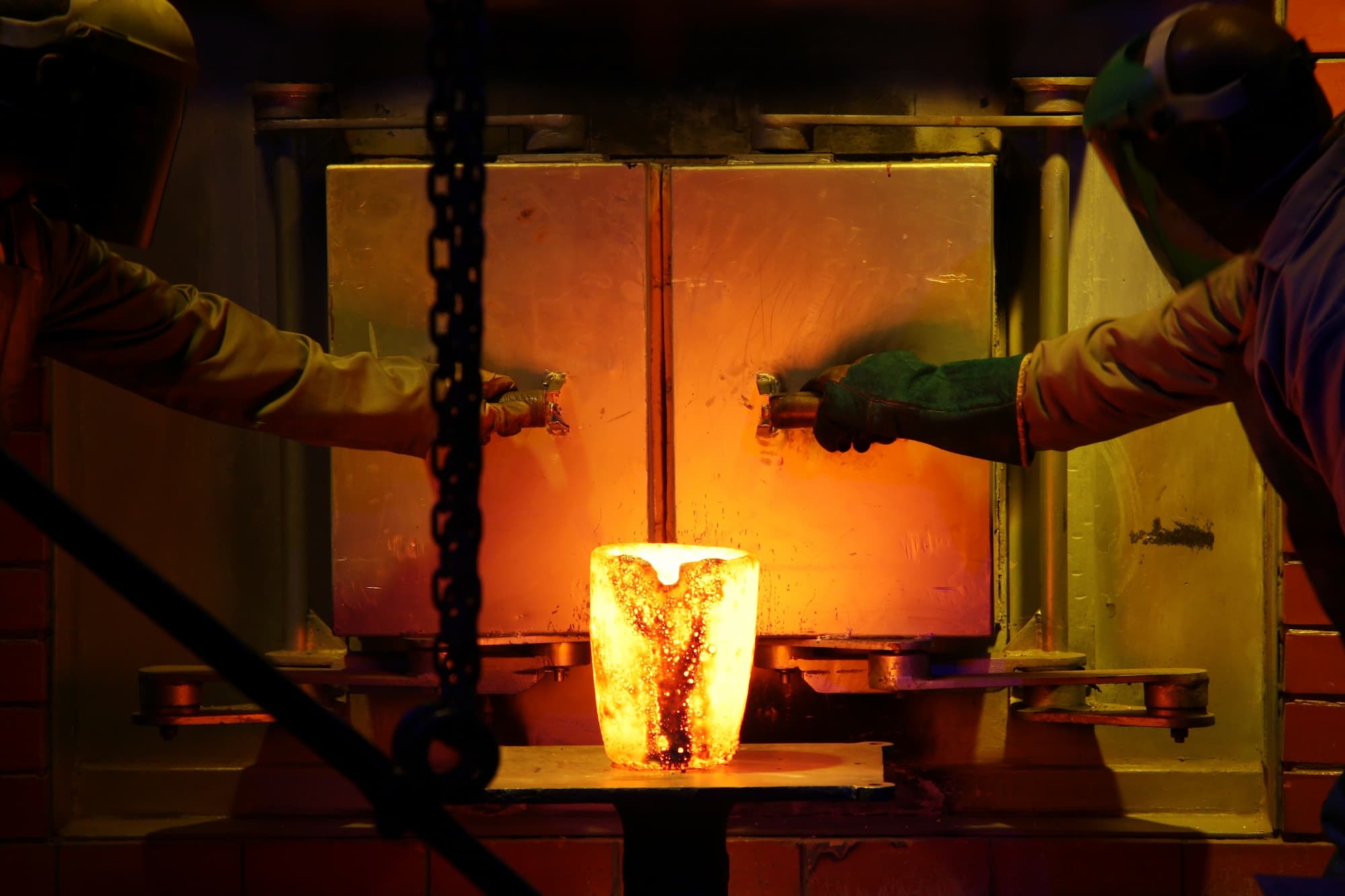When it comes to different casting processes, specific techniques have several differences and advantages over others. Centrifugal casting, in particular, is considered a popular casting process. It is widely known to be free of defects such as blowholes, shrinkage, and gas pockets.
There are three different centrifugal casting procedures, which can be horizontal and vertical. These procedures include centrifuging, semi-centrifugal casting, and genuine centrifugal casting.
What is Centrifugal Casting?
The centrifugal casting process is an efficient method of producing round parts, including pipes, bushings, and cylinder liners. Molten metal is poured into a rapidly spinning cylinder where the high rotational speeds provide the centrifugal force that creates pressure on the metal or other cast materials.
The material has a higher density than the impurities, including sulfides, metal oxides, gas, and other contaminants typically embedded in the material in other casting methods. The metal is spun into the mold wall at high speed to force the impurities to the interior and then forced out of the tube walls.
Advantages of Centrifugal Casting
This process delivers products that are of a high density and strength. It is also cost-effective, has low scrap percentages, and has a dimensionally accurate outer diameter. Very large parts can be accurately formed with a fine surface finish.
The centrifugal casting process is conducive to various materials, including metals, concrete, glass, and pottery. Metals also include iron, steel, stainless steel, and several alloys like nickel, copper, aluminum, magnesium, and lead.
Centrifugal cast technologies create items such as tubes, bushings, military components, housings for jet engine compressors, and large furnace tubes (CCT).
Disadvantages of Centrifugal Casting
While the centrifugal process is superior in many ways to other casting technologies, it can present many similar problems. Parameters such as metal pouring temperature, rotational speed, and die size should be properly calibrated. Other factors of concern include mold temperature, pouring speed, mold coating/cleaning, contamination, and improper set-up.
The inner diameter may not be accurate and require a secondary machining process. Small inner diameters are more challenging to produce. The process is limited to cylindrical parts and is unsuited for several metal alloys. If the process is not fine-tuned, you may encounter various problems. As for materials, aluminum and magnesium are not particularly suited for the CCT process, although alloys with these materials are often used.
Types of Centrifugal Casting Defects
Below is a list of several possible centrifugal casting defects and their possible origin:

How to Reduce Centrifugal Casting Defects
Sound foundry practice and design are essential in producing high-quality castings with so many potential process pitfalls. Casting solidification simulation software is an invaluable tool that helps manufacturers save money and time while achieving greater efficiency with rapid prototyping simulation. The software generates a 3-D model to understand the process without the costly scrap and lost production time.
The designer has the flexibility to tune the product and process to deliver optimal performance, quality, and yield. As a result, the time-to-market is expedited, and what would take weeks or months takes only days without the scrap, lost production time, and tooling modifications.
Optimize Your Production
THERCAST® is one of the best casting solidification simulation software packages available. It helps manufacturers with choosing the right mold design, proper gating, and understanding throughout their casting processes. Contact Transvalor Americas to learn more about our centrifugal casting simulation software.


